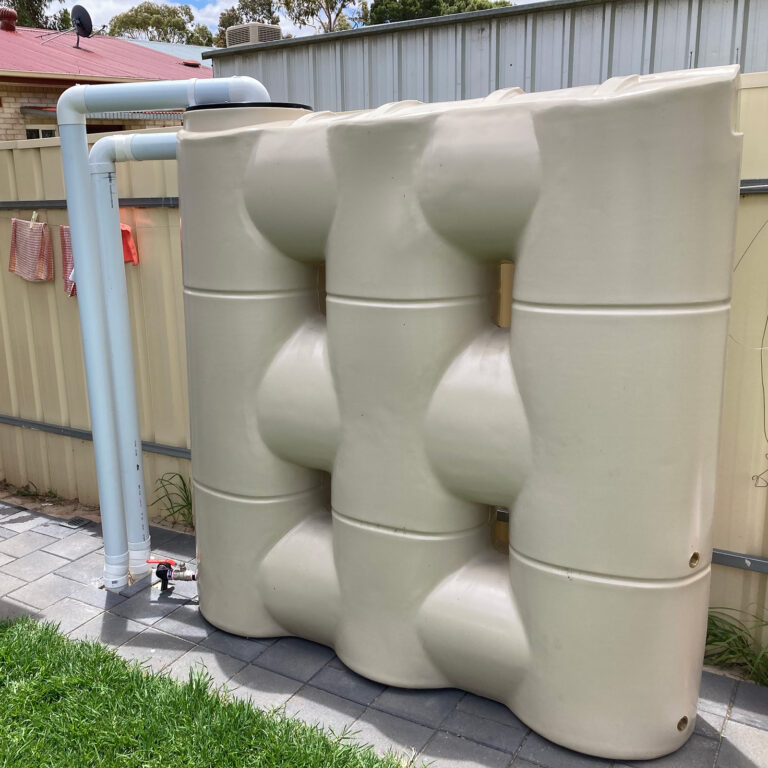Slimline Water Tanks: Space-Saving Solutions for Tiny Characteristics
Recognizing the Relevance of Rain Containers in Drought-Prone Regions for Water Safety
In areas susceptible to extended dry spells, the function of rain containers in boosting water security is a topic of growing relevance. Rain storage tanks serve as a vital tool in minimizing the influence of water lacks by giving a lasting source of water for various needs.
Benefits of Rainwater Containers
Making use of rain containers offers a sustainable remedy for enhancing water supply and improving water safety in property and industrial settings. One of the main benefits of rain storage tanks is their capability to lower reliance on mains water system. By recording and keeping rain that falls on roofs, this alternate resource can be made use of for different non-potable objectives such as watering, flushing bathrooms, and cleaning garments. This not just preserves cured alcohol consumption water yet likewise decreases water expenses for customers.

Rain Harvesting Methods
Rain gathering methods encompass a variety of techniques made to successfully accumulate and save rain for different purposes, adding to water conservation and sustainability. One usual method is the setup of roof catchment systems, where rain is collected from the roofing system of a structure and guided to a tank. This technique is reasonably basic and economical. One more preferred strategy is the use of above-ground or underground tank to store rainwater for later usage. These tanks can be found in different dimensions and materials to fit various needs and can be attached to the existing plumbing system for simple accessibility.

Additionally, rainfall yards and absorptive pavements are ingenious methods that entail landscape design or paving surface areas in such a way that enables rainwater to percolate into the ground, restoring groundwater reserves. Additionally, contour farming and terracing are agricultural methods that assist capture rainwater and prevent soil disintegration in sloping terrain. By executing these varied rainwater harvesting strategies, communities can enhance water safety and security and resilience in drought-prone areas while promoting sustainable water administration techniques.
Relevance of Water Safety
Making certain trustworthy accessibility to clean and adequate water sources is critical for sustaining human health and wellness, financial advancement, and ecological health. Water safety is a vital facet of social strength, specifically in regions at risk like it to droughts and water scarcity. Adequate water safety and security includes numerous measurements, including schedule, top quality, and access of water for residential, farming, commercial, and ecological requirements.
Water safety plays an essential function in promoting public wellness by decreasing the frequency of waterborne conditions and guaranteeing hygiene facilities. Financially, water security is crucial for agricultural performance, industrial operations, and general financial development. Slimline water tanks. Water safety and security is carefully linked to ecological sustainability, as it sustains communities, biodiversity, and total eco-friendly equilibrium.
In drought-prone areas, water protection comes to be much Discover More Here more critical as a result of the enhanced risk of water scarcities. Carrying out strategies like rain harvesting, water recycling, and efficient water management practices can dramatically enhance water protection in these areas. By focusing on water safety, neighborhoods can much better endure the influences of climate change, population development, and various other challenges that endanger water accessibility.
Enhancing Water Strength
With increasing global water challenges, developing durability in water systems has actually ended up being a vital emphasis for sustainable growth initiatives. Enhancing water durability entails applying strategies to guarantee water schedule and top quality in the face of transforming environmental conditions, such as dry spells, floods, and air pollution.
One key facet of enhancing water durability is promoting using rain tanks in drought-prone regions - Slimline water tanks. Rainwater storage tanks offer as an effective ways of recording and storing rainwater for later usage, lowering dependence on scarce freshwater resources during dry durations. By including rain harvesting systems right into water monitoring plans, neighborhoods can enhance their ability to withstand water scarcity and keep water protection

Lasting Water Preservation
Among escalating water obstacles, the prudent administration of water resources via sustainable preservation methods is critical for making sure long-lasting ecological security and societal well-being. Sustainable water preservation involves the efficient usage of water resources to fulfill current requirements without endangering the ability of future generations to fulfill their very view it now own requirements. By applying techniques such as rainwater harvesting, greywater recycling, and water-efficient innovations, areas can decrease water wastage and reduce pressure on freshwater sources.
In addition, sustainable water conservation techniques add to ecosystem wellness by preserving ample water levels in rivers, lakes, and wetlands, sustaining biodiversity, and maintaining all-natural environments. These methods likewise play an essential role in alleviating the influences of climate adjustment by assisting to adapt to changing rainfall patterns and water availability.

Final Thought
Finally, rainwater containers play an essential duty in improving water safety and resilience in drought-prone areas. By utilizing rainwater harvesting methods, neighborhoods can reduce their reliance on standard water sources and advertise lasting water preservation practices. This not only assists reduce the effects of water deficiency during dry spells but additionally adds to long-lasting water safety and resilience despite climate adjustment difficulties.